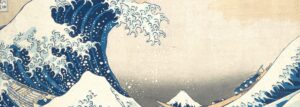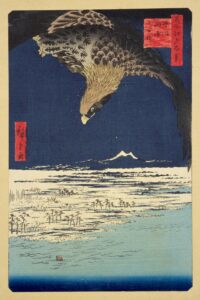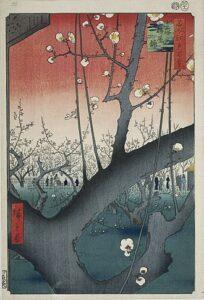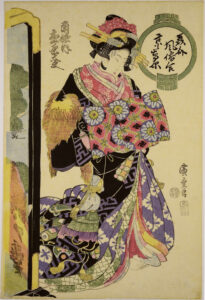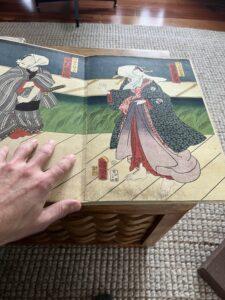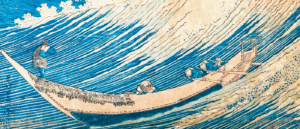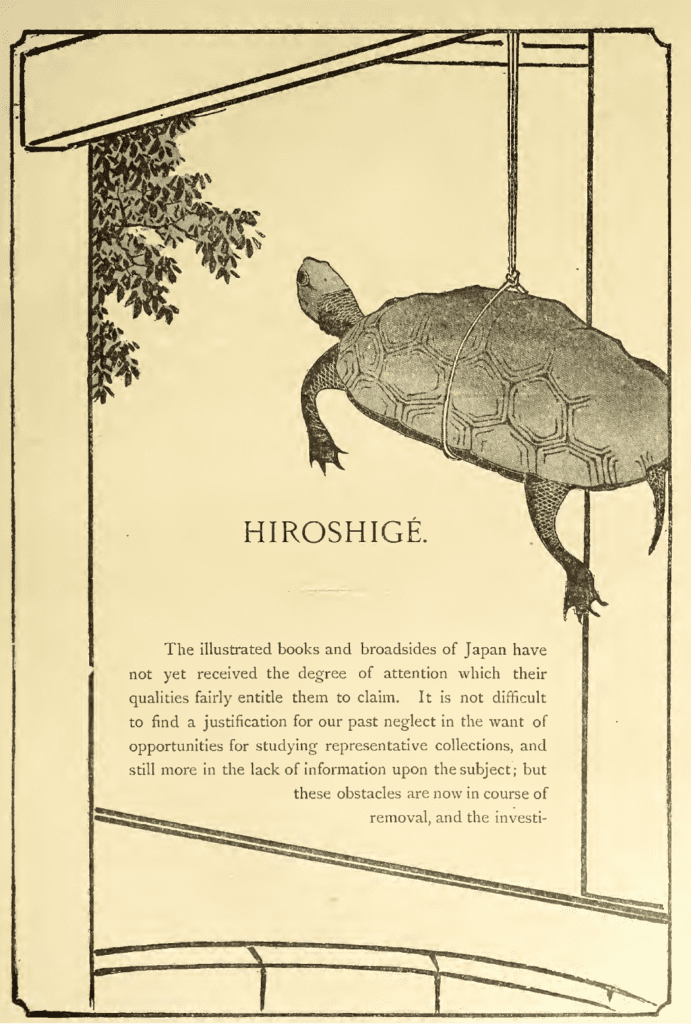 by WILLIAM ANDERSON
by WILLIAM ANDERSON
gator who follows the path opened for him will meet a liberal reward. For all who are interested in the far East, the volumes and single sheets offer a rich fund of information upon Japanese folk-lore, history and topography ; and for those who are attracted by Art, there is furnished a missing chapter, one of the very first, in the history of wood engraving, and a remarkable phase in the development of 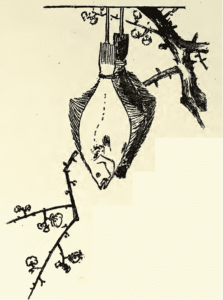 pictorial representation.
pictorial representation.
The history of book and broadside illustration in Japan has already been dealt with elsewhere, and is too long to recapitulate in an article devoted to a single producer ; but in estimating the labours of a man like the subject of this sketch, it is necessary that we should know something of his predecessors ; how the school from which he sprang owed the principles of its art almost entirely to the teaching of the old masters of China and Japan ; and how in its earlier days it was sustained by pupils trained under the Kanos and Tosas, who then represented the classical art of the country, and in more recent times by members of the Shijo naturalistic academy. It is not long since the whole of Japanese pictorial art was for the European world 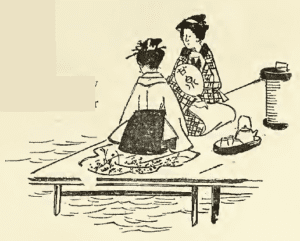 summed up in the name, Hokusai, and although none who have studied the life’s labour of the genial “ Ancient of a Hundred Centuries,” will say that the eulogia lavished upon him are undeserved, it is possible by a too exclusive gift of appreciation to one person to inflict more than a passive injustice upon others. Just as our judgment of Hokusai ought to be preceded by a knowledge of what, in his own school, Hishigawa Moronobu, Tachibana Morikuni, NishigawaSukénobu, Katsugawa Shunsho, and others had done before him, and what had been done by scores of famous painters of the patrician academies before them, so must we see in Hiroshigé not an isolated figure in Japanese Art, but a follower of Hokusai and the Utagawas, and an inheritor of centuries of the sometimes precious, sometimes quaintly narrow art traditions of China and Japan.
summed up in the name, Hokusai, and although none who have studied the life’s labour of the genial “ Ancient of a Hundred Centuries,” will say that the eulogia lavished upon him are undeserved, it is possible by a too exclusive gift of appreciation to one person to inflict more than a passive injustice upon others. Just as our judgment of Hokusai ought to be preceded by a knowledge of what, in his own school, Hishigawa Moronobu, Tachibana Morikuni, NishigawaSukénobu, Katsugawa Shunsho, and others had done before him, and what had been done by scores of famous painters of the patrician academies before them, so must we see in Hiroshigé not an isolated figure in Japanese Art, but a follower of Hokusai and the Utagawas, and an inheritor of centuries of the sometimes precious, sometimes quaintly narrow art traditions of China and Japan.
Hiroshigé is the most familiar nomdepinceau of Kondo Jiubéï, a native ofYédo, who was born in 1797. Of his early life we know little or nothing except 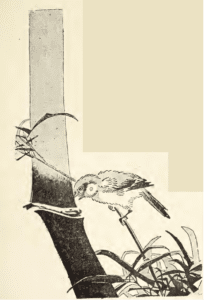 that he was at one time a member of one of the numerous fire brigades of the capital, and that his first artistic efforts were made in the abundant leisure per- ‘ mitted by the intermittent nature of his employment. He at length became, probably during this time, a pupil of Utagawa Ichiriusai Toyohiro, a noted illustrator of novels and broadsides, and it was in compliment to him that Hiroshigé assumed his chief patronymic (the character ‘ hiro ’ ofToyohiro with the affix ‘ shigé ’), as well as that of Ichiriusai, which was often prefixed to the other name. Toyohiro was an artist of remarkable merit. His designs, illustrating the stories of Bakin and other novelists of his period, rivalled those of Hokusai, and indeed bore considerable resemblance to them in their firmness and delicacy, and many of the chromoxylographs bearing his name were often unsurpassed in their qualities of colour. Under such a man Hiroshigé began his career well,
that he was at one time a member of one of the numerous fire brigades of the capital, and that his first artistic efforts were made in the abundant leisure per- ‘ mitted by the intermittent nature of his employment. He at length became, probably during this time, a pupil of Utagawa Ichiriusai Toyohiro, a noted illustrator of novels and broadsides, and it was in compliment to him that Hiroshigé assumed his chief patronymic (the character ‘ hiro ’ ofToyohiro with the affix ‘ shigé ’), as well as that of Ichiriusai, which was often prefixed to the other name. Toyohiro was an artist of remarkable merit. His designs, illustrating the stories of Bakin and other novelists of his period, rivalled those of Hokusai, and indeed bore considerable resemblance to them in their firmness and delicacy, and many of the chromoxylographs bearing his name were often unsurpassed in their qualities of colour. Under such a man Hiroshigé began his career well,  and his earlier broadsides, mostly portraits of women, were remarkably like those of Toyohiro, while his power of drawing the figure was doubtless due to the same teaching ; but his reputation was destined to be founded upon a branch of his calling in which he can have had little aid from his master.
and his earlier broadsides, mostly portraits of women, were remarkably like those of Toyohiro, while his power of drawing the figure was doubtless due to the same teaching ; but his reputation was destined to be founded upon a branch of his calling in which he can have had little aid from his master.
Toyohiro died in 1828, but it was not until many years after this that Hiroshigé rose into note. The earliest of the works of the latter appear to be a series of views of Mount Fuji (Burty Collection) dated 1820, but the majority of his most striking compositions were published after 1845, the decline of his life.
Like Hokusai his maturity came late, but less fortunate than his aged contemporary, his term of years was prematurely brought to a close. He died of cholera during the great epidemic of 1858, at the age of sixty-one, and in the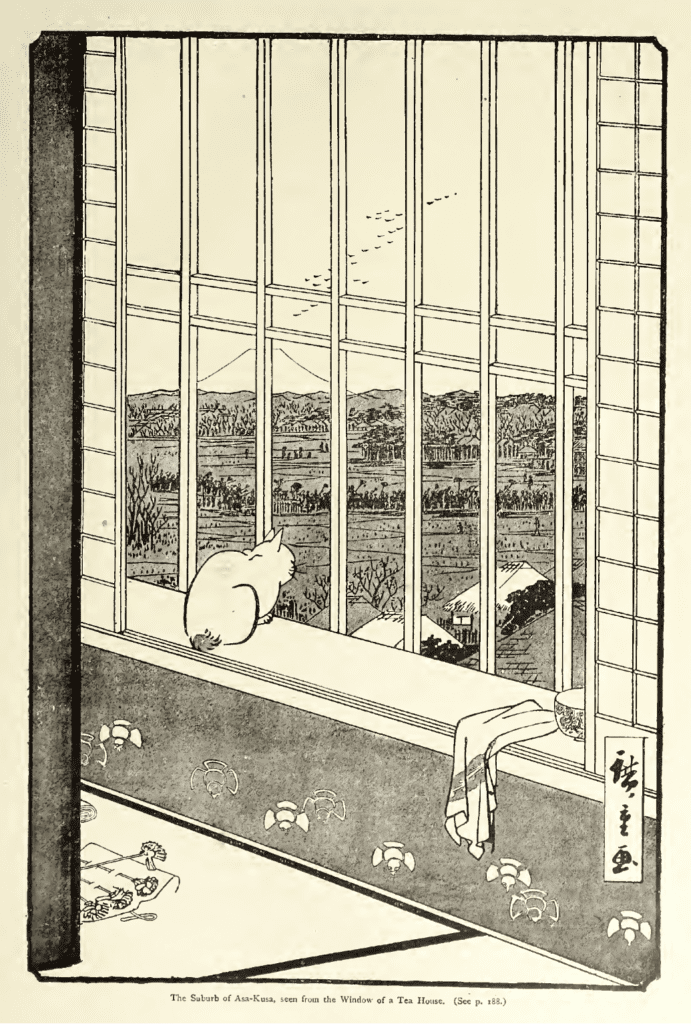 published account of this calamity (AnseiKoréririukoki, 1859), his name figures in the list of prominent citizens who had fallen victims to the scourge. His death was a serious loss to the cause of popular art, and one that yet to be compensated for by the advent of a worthy successor.
published account of this calamity (AnseiKoréririukoki, 1859), his name figures in the list of prominent citizens who had fallen victims to the scourge. His death was a serious loss to the cause of popular art, and one that yet to be compensated for by the advent of a worthy successor.
Hiroshigé’s favourite subjects were the scenes of everyday life in and around Yedo, and along the picturesque highroad connecting the 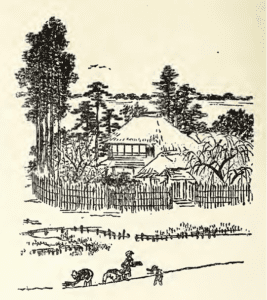 two capitals. He never tired of depicting the streets, gardens, and temples of his native city, with the quaint and cheery crowd of people whose existence appears to have been even during work a continuous heyday ; and hundreds of the famous landscape beauties that were within easy reach of the necessarily deliberate traveller of that day were transferred to his sketch book, and thence to the wood blocks of the engraver. His work in this direction is more extensive and more important than that of any of his fellows, except perhaps the celebrated artists of the topographical handbooks, Shunchösai and Settan. He had a keen eye for the picturesque, a firm pencil, and an instinct in colour that deserved a better record than his printers and publishers have usually chosen to give us. His manner of treating his subject was quite his own, and it would be a very unpractised collector who fails to recognise his sketches amongst those of
two capitals. He never tired of depicting the streets, gardens, and temples of his native city, with the quaint and cheery crowd of people whose existence appears to have been even during work a continuous heyday ; and hundreds of the famous landscape beauties that were within easy reach of the necessarily deliberate traveller of that day were transferred to his sketch book, and thence to the wood blocks of the engraver. His work in this direction is more extensive and more important than that of any of his fellows, except perhaps the celebrated artists of the topographical handbooks, Shunchösai and Settan. He had a keen eye for the picturesque, a firm pencil, and an instinct in colour that deserved a better record than his printers and publishers have usually chosen to give us. His manner of treating his subject was quite his own, and it would be a very unpractised collector who fails to recognise his sketches amongst those of 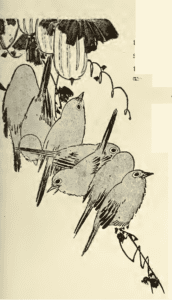 Kunisada, Kuniyoshi, or any other of his countrymen. Like many of his fellow artists of the popular school he had picked up a few ideas upon the European theories of perspective, but he was more consistent in his use of the little knowledge he possessed than they were. Settan, Hokusai, and the rest knew at least as much of linear perspective as he, yet they frankly preferred to ignore it except when the limitations of the Chinese isometric system proved inconvenient for their purpose, and hence examples of European perspective are rare in the handbooks and albums of the first half of the present century. Hiroshigé, on the other hand, always, with very few exceptions, did his best to interpret faithfully his visual impressions of distance. His efforts were imperfectly successful, it is true, but they were honestly made, and their experimental realism sometimes produced curious results. His principal series of Yedo sketches are perhaps most prolific in surprises. In one picture, representing the mouth of the Sumida river taken from a house boat, his view had evidently been intercepted by the person of the oarsman ; and true to his principle of drawing things as he saw them, he has spread the brawny limbs of the coolie with as much of the oar as the paper allowed across the entire scene,
Kunisada, Kuniyoshi, or any other of his countrymen. Like many of his fellow artists of the popular school he had picked up a few ideas upon the European theories of perspective, but he was more consistent in his use of the little knowledge he possessed than they were. Settan, Hokusai, and the rest knew at least as much of linear perspective as he, yet they frankly preferred to ignore it except when the limitations of the Chinese isometric system proved inconvenient for their purpose, and hence examples of European perspective are rare in the handbooks and albums of the first half of the present century. Hiroshigé, on the other hand, always, with very few exceptions, did his best to interpret faithfully his visual impressions of distance. His efforts were imperfectly successful, it is true, but they were honestly made, and their experimental realism sometimes produced curious results. His principal series of Yedo sketches are perhaps most prolific in surprises. In one picture, representing the mouth of the Sumida river taken from a house boat, his view had evidently been intercepted by the person of the oarsman ; and true to his principle of drawing things as he saw them, he has spread the brawny limbs of the coolie with as much of the oar as the paper allowed across the entire scene,  while sky, and earth, oppressed by the gigantic presence appear to recede discomfited into the far distance. In another sketch, a huge paper lantern, hung between the pillars supporting the porch of a temple, monopolises half the picture space, the perspective view of the snow-clad avenue of cryptomerias looking perhaps a little less imposing on account of the immense importance conferred upon the objects in the foreground. In another, and one of the most charming of his broadsides, we see the wall of a room in a tea-house, pierced by a latticed window ; on the window-ledge is seated the most cosy of cats, and over pussy’s arched back stretches out a deliciously impressive rendering of the suburban fields of Asakusa. In others the motive scenery is caught by the eye in broken glimpses through the branches of a cherry tree, or between the pendant blossoms of a great Wistaria ; or as a background to a game of battledore, and shuttlecock, the outstretched bats here intruding hugely and
while sky, and earth, oppressed by the gigantic presence appear to recede discomfited into the far distance. In another sketch, a huge paper lantern, hung between the pillars supporting the porch of a temple, monopolises half the picture space, the perspective view of the snow-clad avenue of cryptomerias looking perhaps a little less imposing on account of the immense importance conferred upon the objects in the foreground. In another, and one of the most charming of his broadsides, we see the wall of a room in a tea-house, pierced by a latticed window ; on the window-ledge is seated the most cosy of cats, and over pussy’s arched back stretches out a deliciously impressive rendering of the suburban fields of Asakusa. In others the motive scenery is caught by the eye in broken glimpses through the branches of a cherry tree, or between the pendant blossoms of a great Wistaria ; or as a background to a game of battledore, and shuttlecock, the outstretched bats here intruding hugely and
strangely from the extreme borders of the picture, while the players who wield them are left to the imagination.
So far, although his effects are often rather startling, we have no reason to object to his treat- ment of perspective, but if we analyse further we shall find his vanishing points lying anywhere except in the right place, and shall perceive that he had no real knowledge of the science. He was not, however, guilty 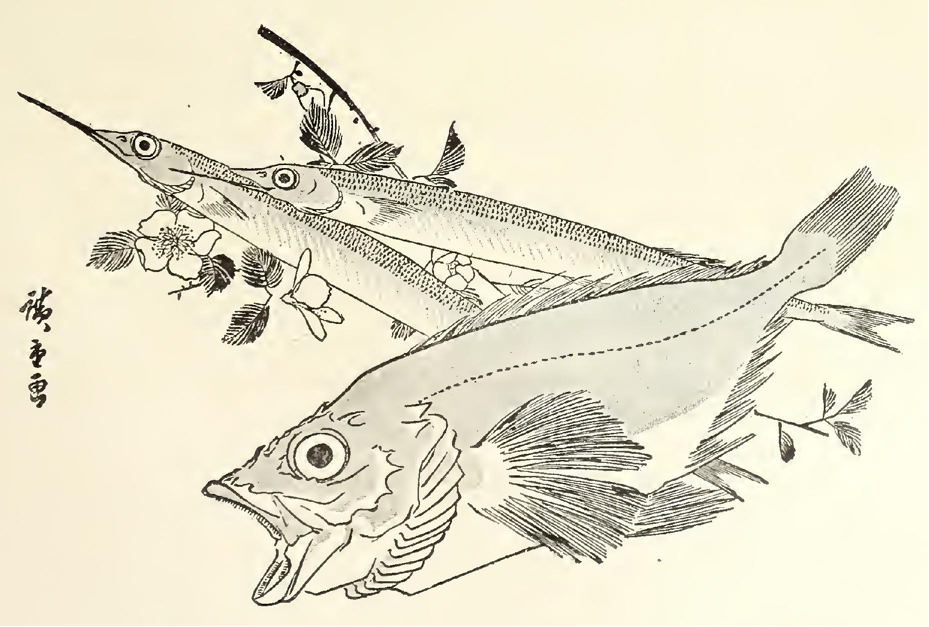 of the absurd errors committed by some of his contemporaries, who did not scruple to introduce two distinct points of station for a single view, and intermingled linear and isometrical perspectives in the same sketch ; and in the majority of his pictures, if not scanned too closely, the impression of distance is fairly satisfactory.
of the absurd errors committed by some of his contemporaries, who did not scruple to introduce two distinct points of station for a single view, and intermingled linear and isometrical perspectives in the same sketch ; and in the majority of his pictures, if not scanned too closely, the impression of distance is fairly satisfactory.
WILLIAM ANDERSON
(To be continued in No. 16.)

